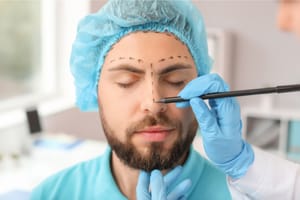Rhinoplasty, often referred to as a nose job, is a widely sought-after cosmetic surgery that can enhance both the aesthetic appeal and functionality of the nose.
The pricing for this transformative procedure, however, can differ greatly, influenced by numerous variables.
By familiarizing yourself with these key factors, you can effectively navigate the financial planning process for your surgery.
Ready to delve deeper into what determines the cost of rhinoplasty?
Let's explore the critical elements that can impact your investment in this life-changing procedure.
1)) Surgeon's Experience
One of the most significant factors that can affect the cost of rhinoplasty is the experience and expertise of the surgeon performing the procedure.
A highly skilled and experienced surgeon may charge more for their services, but their expertise can often lead to better results and reduced risk of complications.
2)) Location
The cost of rhinoplasty can also vary based on where the surgery is performed.
Cosmetic procedures tend to be more expensive in larger cities with higher living costs.
Some regions may have a higher demand for rhinoplasty services, which can drive up prices.
3)) Type Of Rhinoplasty
The specific type of rhinoplasty you undergo can also impact the overall cost.
For example, a revision rhinoplasty (a procedure to correct or improve upon a previous nose job) is often more complex and time-consuming than a primary rhinoplasty, leading to higher costs.
4)) Anesthesia And Facility Fees
In addition to the surgeon's fee, there are other costs associated with rhinoplasty that should be considered.
This includes fees for anesthesia, operating room facilities, and any necessary medical supplies or equipment.
5)) Complexity Of The Procedure
The complexity of your unique case will also influence the cost of your rhinoplasty surgery.
For example, if you require additional work on your nasal structure or have underlying health conditions that could complicate the surgery, these factors may increase the overall cost.
6)) Preoperative Tests And Consultations
Before undergoing rhinoplasty, you will likely need to undergo various preoperative tests and consultations with your surgeon to ensure you are a suitable candidate for surgery.
These additional appointments and tests can add to the total cost of your procedure.
7)) Postoperative Care
Following your surgery, you will need to budget for postoperative care such as follow-up appointments with your surgeon, pain medications, dressings or splints, and any necessary prescription medications or treatments.
8)) Reputation Of Surgeon/Clinic
The reputation and prestige of your chosen surgeon or clinic can also play a role in determining the cost of your rhinoplasty procedure.
Highly sought-after surgeons who have a track record of successful outcomes may charge more for their services.
9)) Insurance Coverage
In some cases, insurance may cover part or all of the cost of rhinoplasty if it is deemed medically necessary to correct breathing issues or structural abnormalities in the nose.
However, elective cosmetic procedures are typically not covered by insurance.
Conclusion
The cost of rhinoplasty is influenced by a myriad of factors, ranging from the surgeon's experience and location to the complexity of the procedure and potential insurance contributions.
Understanding these elements is crucial for financial planning and ensuring you make an informed decision about this impactful surgery.
By evaluating aspects such as the type of rhinoplasty, pre and postoperative care, along facility fees, you can better anticipate the overall investment.
This comprehensive awareness not only aids in budgeting effectively but also in selecting a reputable surgeon who aligns with your aesthetic and functional goals.
Ultimately, by grasping the nuances of these cost determinants, you embark on your rhinoplasty journey with confidence, ready to achieve desired results while maintaining financial viability.
Download Our Free E-book!








